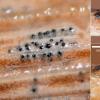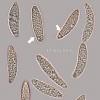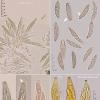
30-11-2025 12:53
 Edvin Johannesen
Edvin Johannesen
White short-stipitate apothecia found on thin twig

30-11-2025 10:47
 William Slosse
William Slosse
I recently found a collection of small Peziza sp.

27-11-2025 12:01
Thomas Læssøehttps://svampe.databasen.org/observations/10496727

27-11-2025 11:46
Thomas Læssøehttps://svampe.databasen.org/observations/10493918

17-09-2025 10:50
Heather MerryleesHi there!I am hoping for any advice on the identif

29-11-2025 08:40
 Andreas Millinger
Andreas Millinger
Hello,on a splintered part of a branch on the grou

28-11-2025 16:45
Nogueira HéctorNovember 23, 2025 Requejo de Sanabria (León) SPAI

25-11-2025 14:24
Thomas Læssøehttps://svampe.databasen.org/observations/10490522

27-11-2025 15:41
Thomas LæssøeSpores brownish, typically 4-celled; 26.8 x 2.4;

27-11-2025 11:31
Thomas LæssøeCollectors notes: Immersed ascomata, erumpent thro
Looking for fungi on Arundo donax I have found these very small roundish, blackish, inmersed perithecia up to 100-120 microns, more or less arranged in rows and covered by a melanised periderm on dead leaves lying on the ground. Only protruding the roundish papillate necks. The shortly stipitate asci have a conspicuous refractive apical hemiamyloid apparatus (deep blue after KOH-pret.) and hyaline apiospores.
I feel this fungus might belong, or to be near to the genus Pseudomassaria, or into the Diaporthales?.
Have you some idea for help me?
Many thanks in advance
The collection was made at the Botanical Garden of Gijón (north of Spain), at the sea level

why was I sure you were currently scrutinizing Arundo donax?
Your fungus is very distinctive, I agree with you about Pseudomassaria, or more likely Leiosphaerella because of the very small perithecia.
Did you check Jaklitsch & Voglmayr 2012, Fungal Diversity 52: 75-98? There is not your fungus but sound information on the generic delimitation.
Good luck with your search!
Jacques
All best Hermann
Hi Jacques and Hermann. Thank you for help me. Yes, I had read this paper and, as you say me, maybe Leiosphaerella could be a good genus for it, but I must to search more information about it....Yes, I was not lucky with your fungus on Arundo but I will insist.
Hermann, my first impression was Apiospora montagnei but I think this genus lacks and apical apparatus at the asci (Hyde & al, Sydowia 50(1): 21-80) and for it I rejected this possibility.


